Brickellia venosa, Veiny Brickellbush
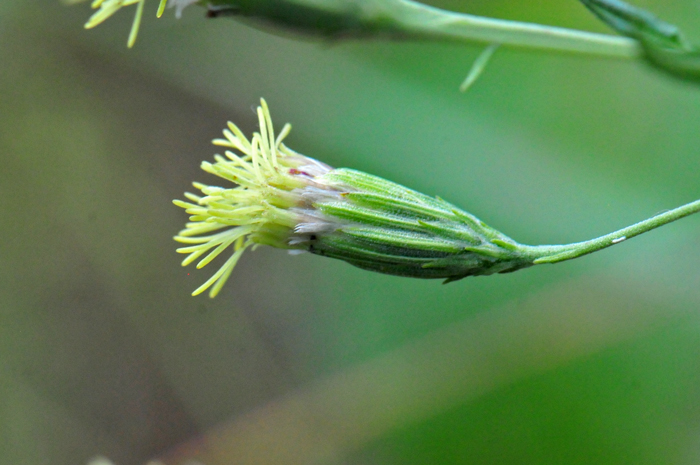
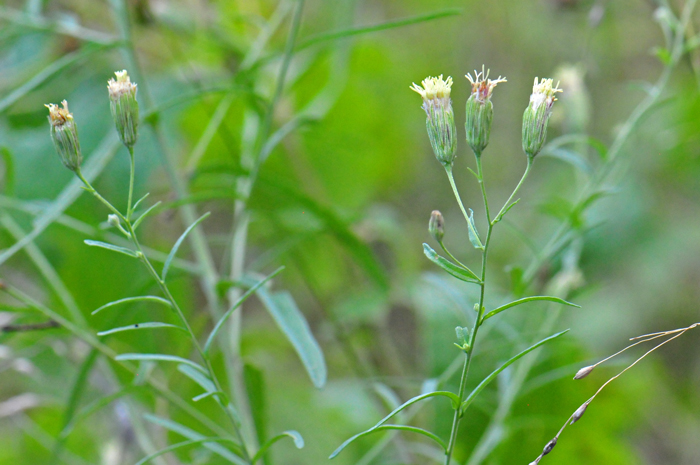
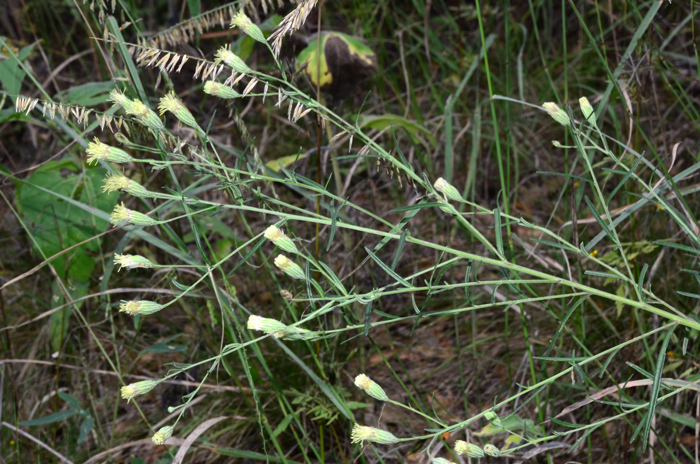
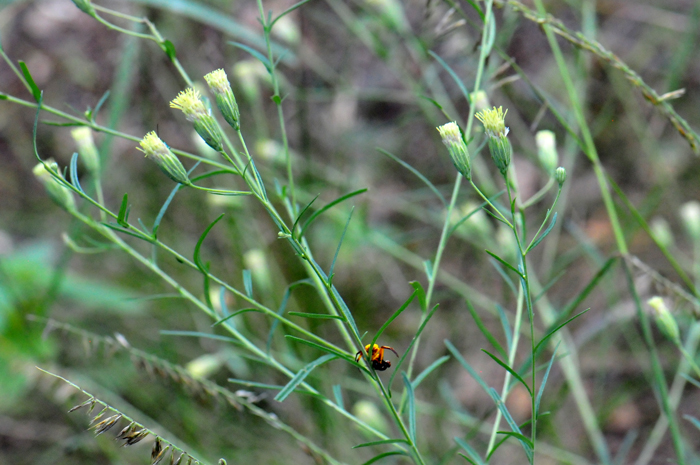
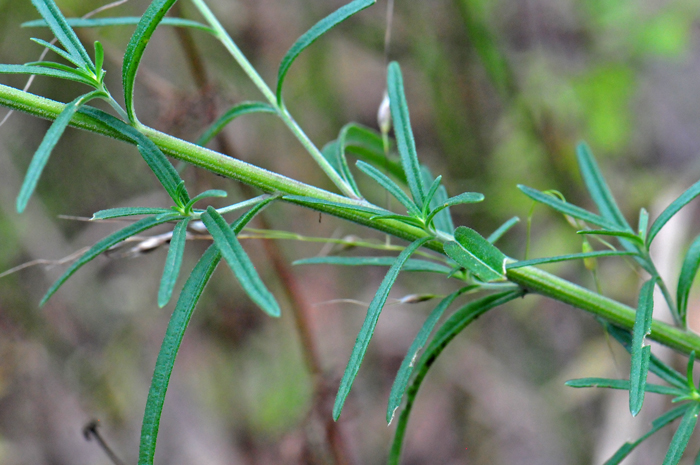
Scientific Name: Brickellia venosa
Common Name: Veiny Brickellbush
Also Called:
Family: Asteraceae, Sunflower Family
Synonyms: (Coleosanthus venosus)
Status: Native
Duration: Perennial
Size: Up to 2 feet (61 cm) or more (31 inches - 80 cm).
Growth Form: Forb/herb, subshrub; woody caudices; stems branched, stems covered in dense soft short woolly hairs (tomentose) and gland-dotted.
Leaves: Green; leaves arranged opposite on stem; short stalks or petioles, or without a stalk (sessile); leaves with 3 prominent mid-veins; blades oblong to linear; leaf edges or margins smooth without teeth (entire) or toothed (dentate); leaf surfaces gland-dotted, sticky pubescence.
Flower Color: Pale yellow and often purple tinged; heads on slender flowering stalks (peduncles) in loose panicle arrays or single flowers (solitary), often terminal on lateral branches; peduncles gland-dotted and covered with tiny soft erect hairs (puberulent); disk flowers only; bracts surrounding flower heads greenish and often purple tinged; fruit is a cypsela with a white pappus consisting of 20 or more barbed (barbed) stiff hairs (bristles).
Flowering Season: August or September to October.
Elevation: 4,500 to 6,000 feet (1,370-1,800 m).
Habitat Preferences: Dry hills, rocky slopes, canyon walls, mesas and limestone outcrops.
Recorded Range: Relatively rare in the United States, Veiny Brickellbush is found in Arizona, New Mexico. It can be found in southeast Arizona, southwest New Mexico and El Paso County Texas. It is also native to northwest Mexico.
North America & US County Distribution Map for Brickellia venosa.
North America species range map for Brickellia venosa:
North American range map courtesy of Virginia Tech, Dept. of Forest Resources & Environmental Conservation
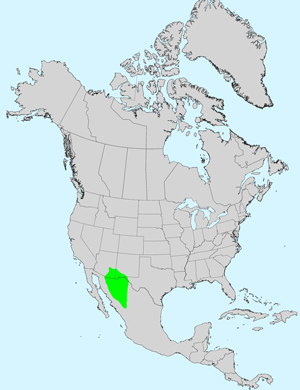
U.S. Weed Information: Unknown
Invasive/Noxious Weed Information: Unknown
Wetland Indicator: Unknown
Threatened/Endangered Information: Unknown
Genus Information: In North America there are 36 species and 36 accepted taxa overall for Brickellia. World wide, The Plant List includes 112 accepted species names and includes a further 136 of infraspecific rank for the genus.
The genus Brickellia was published by Stephen Elliott in 1824.
In the Southwestern United States: Arizona has 22 species of Brickellia, California has 13 species, Nevada has 12 species, New Mexico has 19 species, Texas has 15 species, Utah has 7 species. All data is approximate and subject to taxonomic changes.
Comments: There is little information about Veiny Brickellbush, apparently because of its limited distribution in the United States. Although it is abundant in the southwest with most species found in Arizona and New Mexico.
In Southwest Desert Flora also see; Brickellbush, Brickellia californica, Coulter's Brickellbush, Brickellia coulteri and Chihuahuan Brickellbush, Brickellia floribunda.
The genus Brickellia was published by Stephen Elliott in 1824.
The species epithet venosa (veno'sa:) means conspicuously veined, a reference to the character of the leaves.

